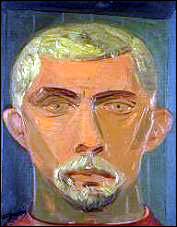Museo Nacional de Colombia,
Oct 19, 2001 - Jan 13, 2002
Bogotá, D.C., Colombia
Alejandro Obregón
by Carmen María Jaramillo
Alejandro Obregón is one of the Colombian artists who has devoted his production most lucidly and sensitively to the creation of multiple visions of the country. This exhibition aims at evidencing the artist's relationship with the Colombian context from several points of view: as a renewal of pictorial language; as an artist who revisits with undisguised freedom his relationship with the landscape; and as a painter linked to a social, political, and cultural context. Alejandro Obregón
Obregón appeared within the national artistic arena following his participation in the V Colombian Artists' Salon in 1944. His introduction to art was received with the approval of the local press, especially by the Austrian critic Walter Engel, who, according to Marta Traba, saw him before anyone else had and dubbed his art "Romantic Expressionism"(1) due to his passion for the country, its nature, and its culture. This artist's proximity to modern art is unique, in its moment within Colombia's fine art's arena. Obregón did not intend for his painting to be detached from its context, but rather he took into account the social, political, and daily environment. Obregón did not state his interest for issues related to an optimistic modernism, such as progress, the cult to technology, or the search for industrial materials. Neither did he opt for the opposite: the cultural despair that does not believe in the project that has moved the West for centuries. Obregón fed from the proposals driving modern art, and located them. That is, settings were one of his main worries, settings such as geographical settings, as culture, as a sense of belonging. This is why he never stated a radical abstraction, but merged abstract and figurative items in his works as a means of revolting against purist modernism. Therefore, in his work, no rejection of the figure itself may be perceived, but rather a figure that is considered narrative and literal instead of expressing or symbolizing. Read Artist Biography
|











